Umbria preserves traces of over two millennia of history through its archaeological sites, religious monuments, and remarkable natural formations. The region features underground complexes such as Orvieto Underground with its 1,200 passages carved into volcanic tuff, and Narni Underground, revealing medieval chapels and remains of Roman aqueducts. Visitors also explore the Dunarobba Fossil Forest, where 50 petrified tree trunks dating back three million years showcase the region's geological evolution. Medieval castles like Rocca Albornoziana overlook ancient towns, while monasteries such as San Pietro in Valle and Eremo delle Carceri maintain medieval art and spirituality. The Umbrian landscape stretches from Gubbio's Roman theaters to mountain villages like Castelluccio, perched at 1,452 meters (4,764 feet) above sea level, and includes the Nera Natural Park, which protects over 2,120 hectares (5,243 acres) of forests and limestone formations. These sites trace the region’s history from the Etruscan civilization through the Renaissance.
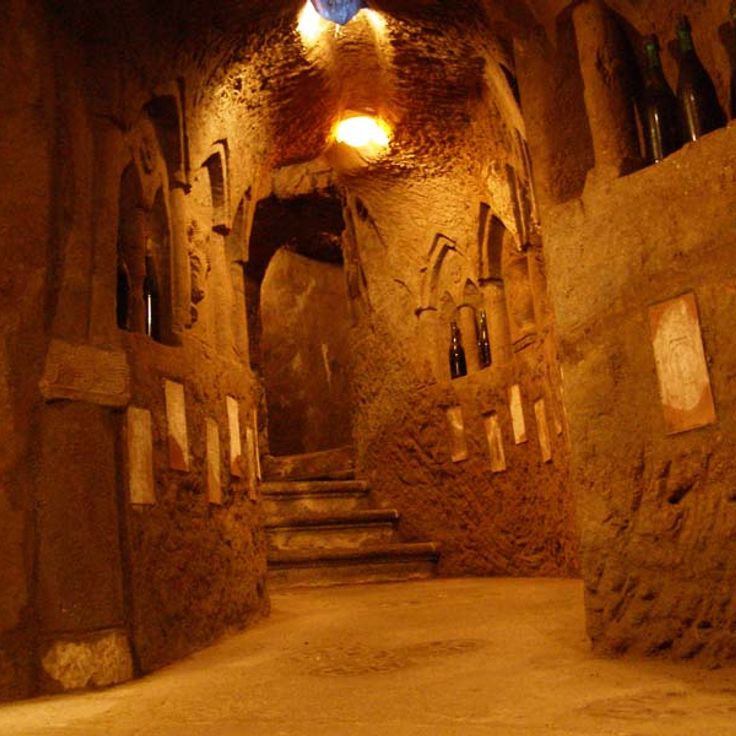
Orvieto, Italy
Orvieto UndergroundOrvieto Underground consists of 1,200 passages, caves, and wells carved into the volcanic tuff beneath the city of Orvieto. The installations were created by the Etruscans and then used continuously for more than two and a half millennia. The network served various purposes, including water supply, storage, defense, and artisan workshops. The chambers are distributed across several levels and show the development of the city from Etruscan times to the Renaissance. Visitors can explore cisterns, quarries, dovecotes, and medieval workshops carved into the soft tuff.
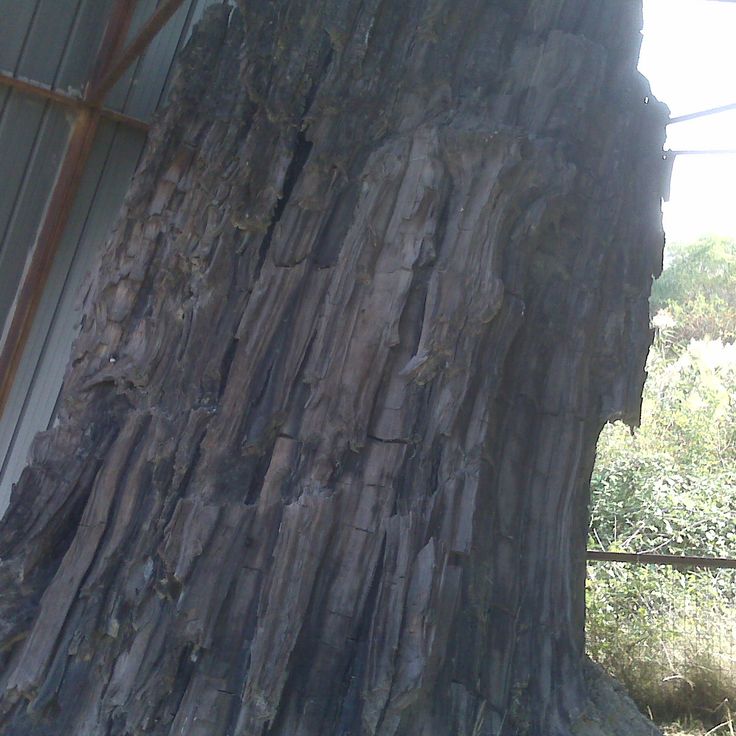
Avigliano Umbro, Italy
Foresta Fossile di DunarobbaThe Foresta Fossile di Dunarobba documents the geological evolution of Umbria with approximately 50 petrified tree trunks from the Pliocene period. These three million year old remains of conifers of the genus Taxodium still stand in their original vertical position and demonstrate the region's transformation from a marshy landscape to the present hilly terrain. The site was discovered during clay extraction work in the 1980s and complements the historical evidence of Umbria spanning from the Etruscans to the Renaissance.
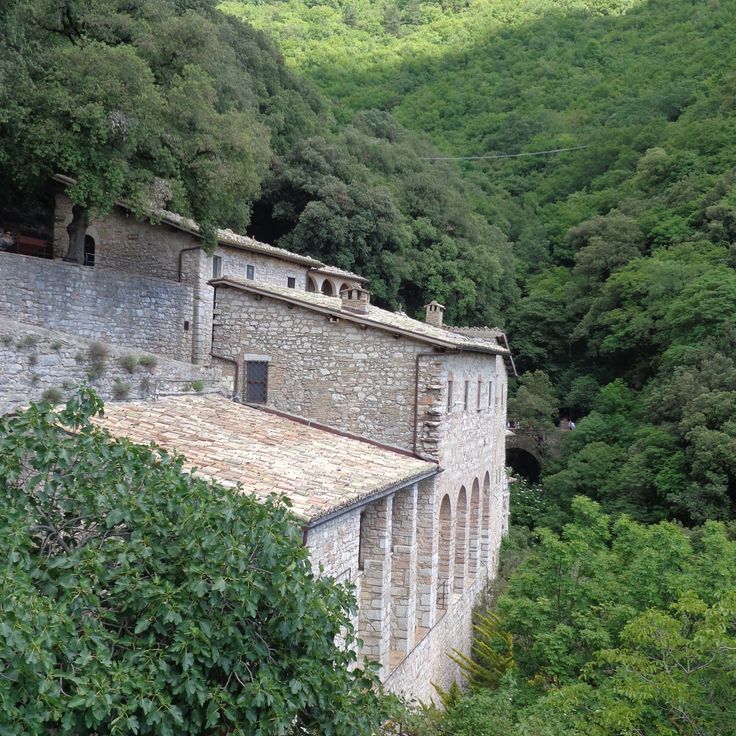
Assisi, Italy
Eremo delle CarceriEremo delle Carceri is a monastery from the 13th century built into a cave on Monte Subasio that served as a retreat for Franciscan monks. The complex combines natural rock formations with religious architecture and preserves the tradition of contemplative spirituality practiced by the order in medieval Umbria. The location on the forested mountain provides insight into the ascetic practices of the early Franciscans and their connection to the natural environment of the region.

Norcia, Italy
CastelluccioCastelluccio is a medieval mountain village at 4,763 feet (1,452 meters) elevation in the Monti Sibillini, surrounded by the high plateau of Grande Piana. The village sits at the center of a lentil cultivation area where the fields display different colors from May to July during the flowering season. The settlement features traditional stone architecture and serves as a starting point for hikes in the Umbrian mountains. The location provides views over the cultivated plains and surrounding peaks.
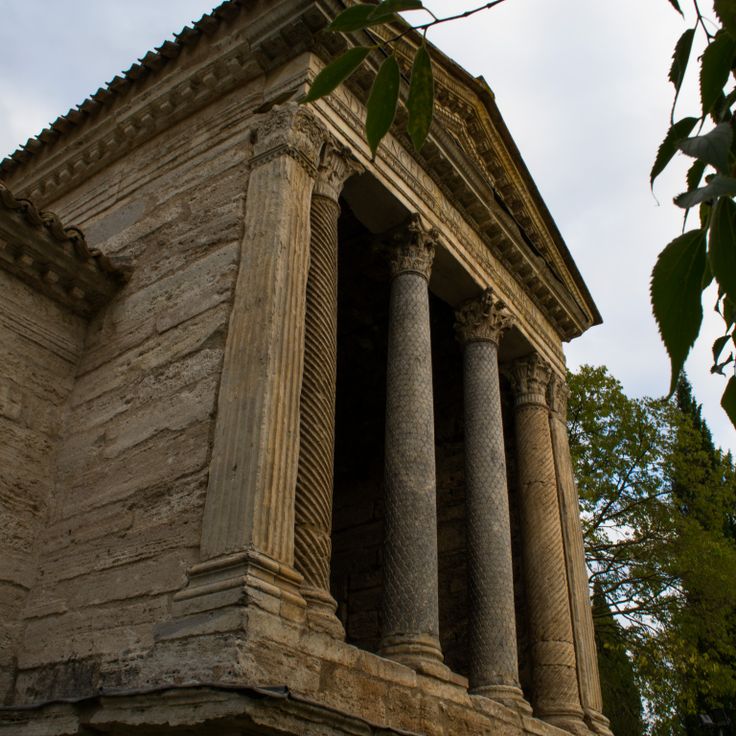
Campello sul Clitunno, Italy
Temple of ClitunnoThis temple from the 8th century stands on the banks of the Clitunno River and combines architectural elements from ancient Rome with early Christian construction. The small religious structure demonstrates the development of sacred architecture in Umbria during the transition from ancient Rome to the Middle Ages. The building is among the historical sites in the region that preserve evidence of Etruscan, Roman, and Christian traditions.
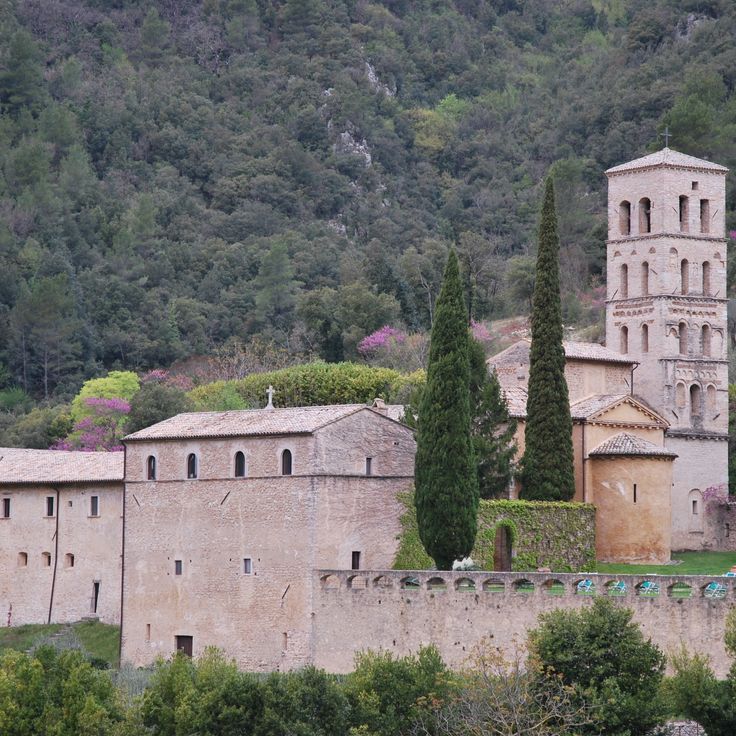
Ferentillo, Italy
San Pietro in ValleThe Benedictine monastery of San Pietro in Valle was founded in the 8th century and preserves 12th-century murals depicting biblical scenes from the Old and New Testaments. The complex includes an underground burial chamber containing stone sarcophagi of Lombard rulers decorated with carved reliefs. The church displays Romanesque architectural elements and medieval artworks that have undergone several modifications over the centuries. This monastery stands in the wooded Valnerina valley and documents the history of Umbria from the Lombard period through the Middle Ages.

Spoleto, Italy
Rocca AlbornozianaThe Rocca Albornoziana is a 14th-century fortress overlooking Spoleto from a hilltop. Commissioned by Cardinal Albornoz, the complex includes six towers and two inner courtyards that illustrate the region's medieval defense system. This fortress served for centuries as a military stronghold and papal residence. Today, the Rocca houses a museum documenting the history of Umbria from Roman times to the Renaissance. From its ramparts, views extend over the valley of Spoleto and the surrounding Apennines.
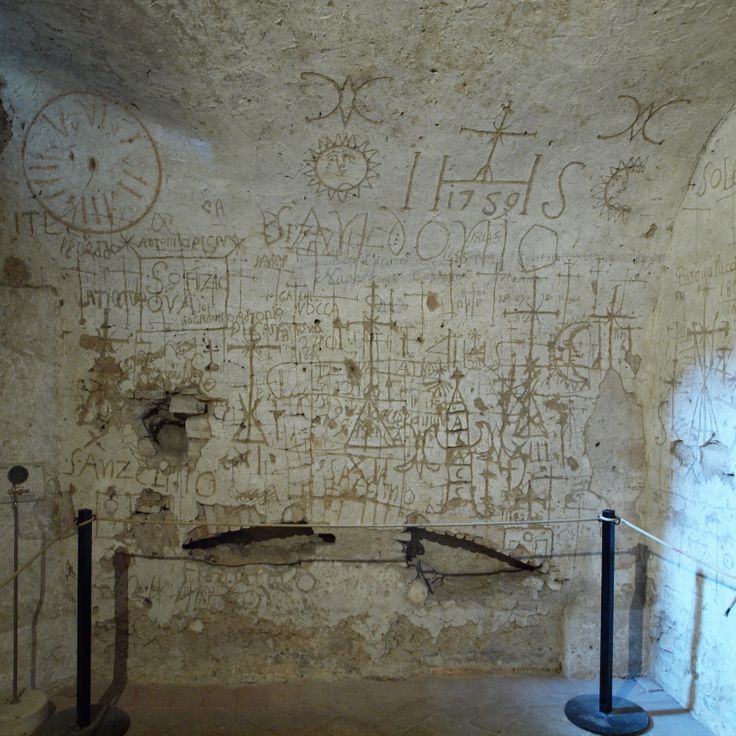
Narni, Italy
Underground NarniThis underground site extends beneath the town of Narni and comprises several historical chambers from different periods. The complex contains a chapel decorated with medieval frescoes, a former courtroom of the Inquisition, and sections of a Roman aqueduct. The various construction phases span from Roman times through the medieval period, documenting the continued use of these subterranean spaces for more than a thousand years. Visitors can walk through the underground passages and observe the preserved wall paintings and hydraulic structures. The site demonstrates through its architectural remains the development of the town across multiple historical periods.

Terni, Italy
Nera River ParkThis natural park extends across 2100 hectares along the Nera River and preserves limestone cliffs, caves, and oak forests. The protected area displays the geological formations of the region and includes the Marmore Falls, which reach a height of 540 feet (165 meters). Hiking trails lead through holm oak and oak forests and follow the river course through the Umbrian highlands, where the natural river landscape of the Nera is maintained.
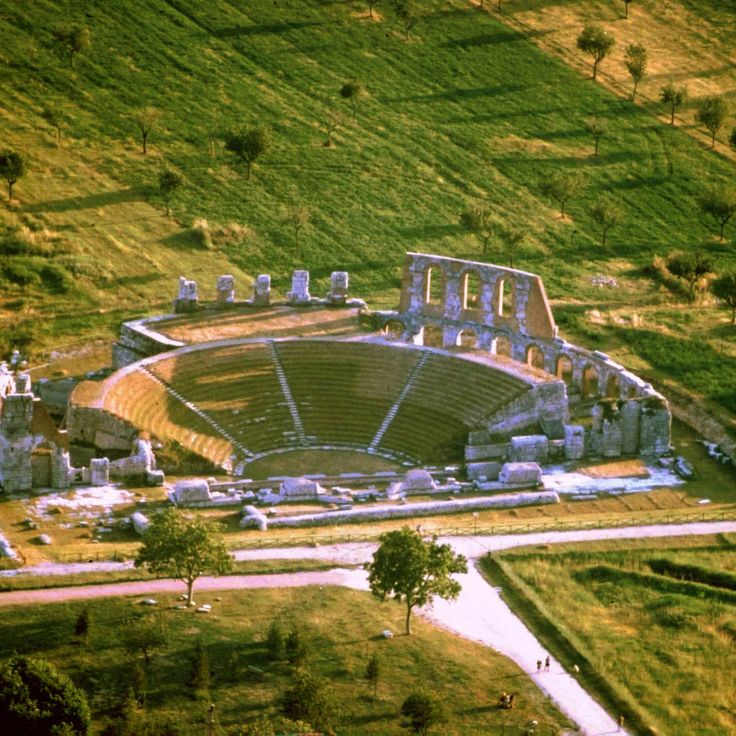
Gubbio, Italy
Roman TheaterThe Roman Theater was built in 55 BC and accommodated 6,000 spectators. The tiers follow the natural slope of the terrain and demonstrate the Roman construction techniques of that era. This ancient structure illustrates the urban development of Gubbio under Roman rule and belongs to the archaeological remains from the period between the Etruscan civilization and the Renaissance in Umbria.
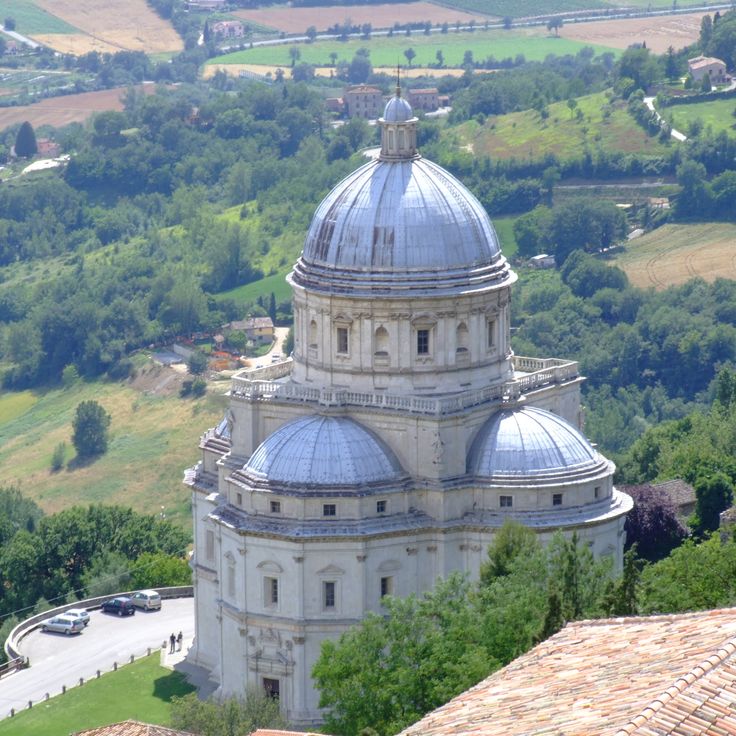
Todi, Italy
Church of MaryThe Renaissance church of Santa Maria della Consolazione in Todi was built starting in 1508 following a cross-shaped plan. The central dome rests on a drum with round-arched windows that direct light into the interior. This building documents Renaissance architecture in Umbria, a region with historical sites ranging from the Etruscan period to the Renaissance.
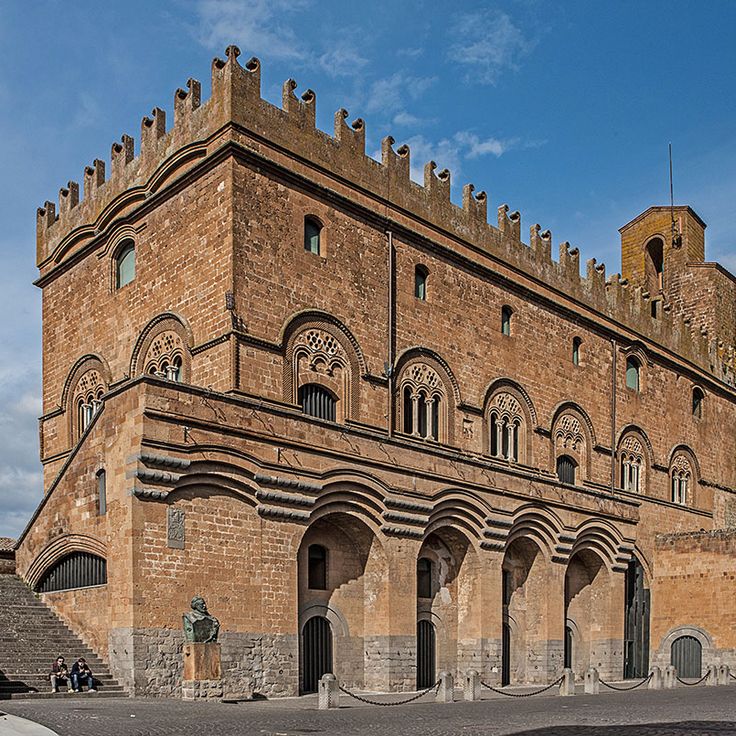
Orvieto, Italy
People's PalaceThis palace from 1281 features pointed arch windows and a two-story loggia. The first-floor hall contains frescoes from the 14th century and illustrates the medieval architecture of Umbrian towns. The building documents the historical development of Orvieto and the artistic tradition of the region between the Etruscan era and the Renaissance.
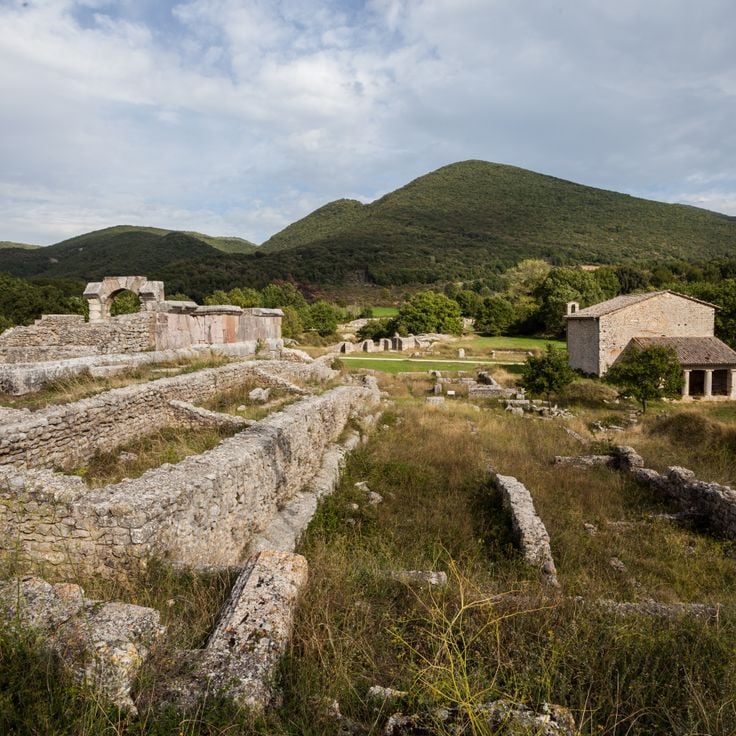
San Gemini, Italy
Carsulae Archaeological ParkThis archaeological park preserves the remains of a Roman town along the Via Flaminia dating from the second and third centuries AD. The site includes public baths, a forum with temples, and an amphitheater that document urban development during the Roman Imperial period in Umbria. The excavated structures display the features of public buildings and the infrastructure of Roman settlements in central Italy.
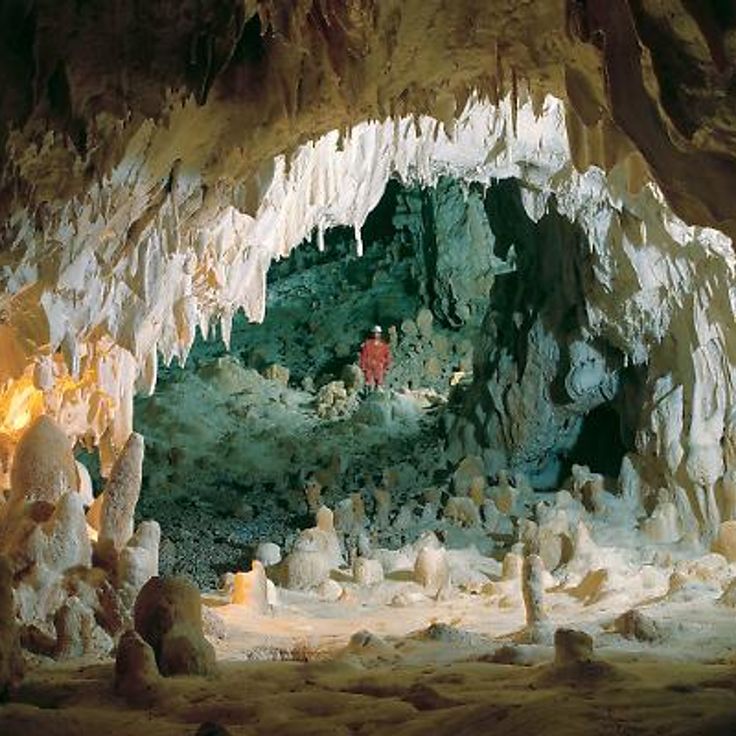
Costacciaro, Italy
Monte Cucco CaveThe Grotte di Monte Cucco extends about 19 miles (30 kilometers) of underground passages and reaches a depth of 3,025 feet (922 meters). The cave system contains chambers and mineral formations that developed over thousands of years. This karst cave sits within the regional park of the same name and ranks among the principal cave systems of the Apennines. The cavity displays limestone structures and contains underground watercourses. Visitors can follow guided tours through accessible sections, while deeper areas require caving experience.
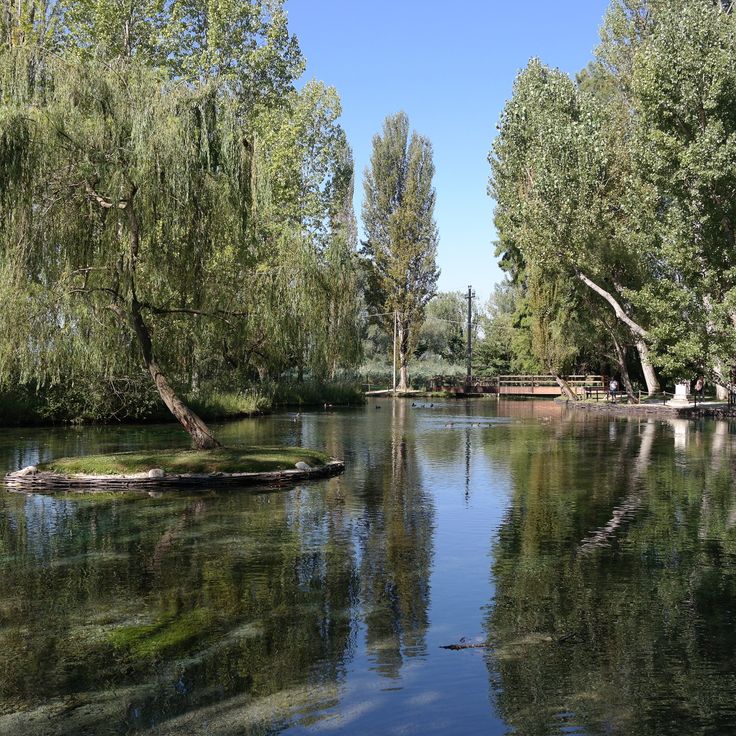
Campello sul Clitunno, Italy
Clitunno SpringsThe Clitunno Springs form several pools among willows and poplars, bearing witness to Umbria's history spanning more than two millennia. Roman writers Virgil and Pliny the Younger described this location, known since ancient times for its clear waters. The natural setting with trees and water basins has attracted poets and travelers for centuries. These springs feed the Clitunno River and integrate into the region's historical heritage, which includes archaeological sites, religious monuments, and natural formations.
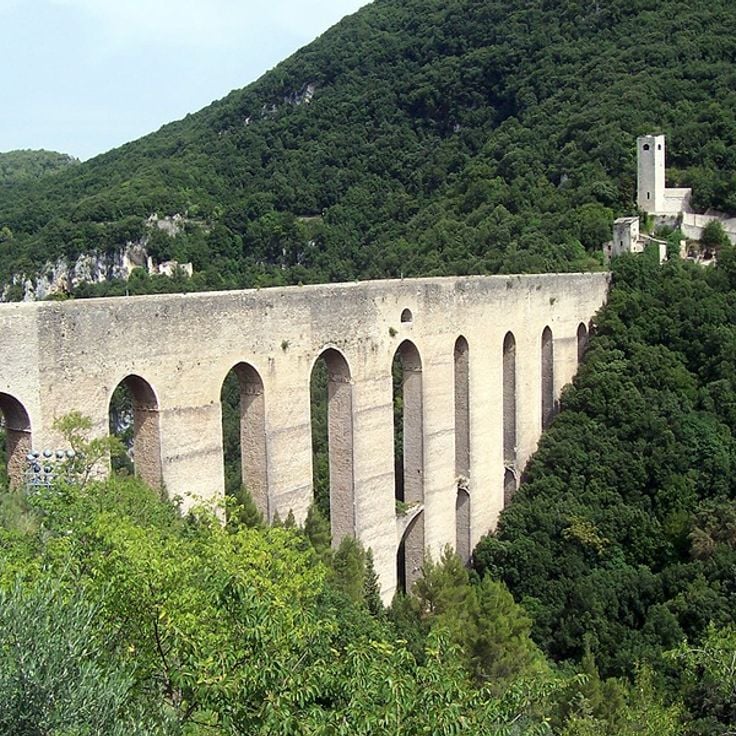
Spoleto, Italy
Ponte delle TorriThis 13th-century stone bridge served Spoleto as an aqueduct and defensive structure. The construction measures 755 feet (230 meters) in length and reaches a height of 249 feet (76 meters). The bridge connected the Rocca Albornoziana to Monteluco and transported water from the mountains to the city. The structure demonstrates medieval engineering and played a strategic role in defending the city during papal rule.

Spello, Italy
Villa FideliaThis 16th-century villa near Spello demonstrates Renaissance architecture in Umbria. Villa Fidelia features formal Italian gardens with statues and houses a collection of regional artworks. The estate documents the lifestyle of landed nobility during this period and the cultural development of the region throughout the Renaissance. The gardens follow formal principles of Italian garden design, while the art collection includes works by local artists. This historic residence provides insights into Umbria's architectural and artistic development from the 16th century through the later Renaissance.
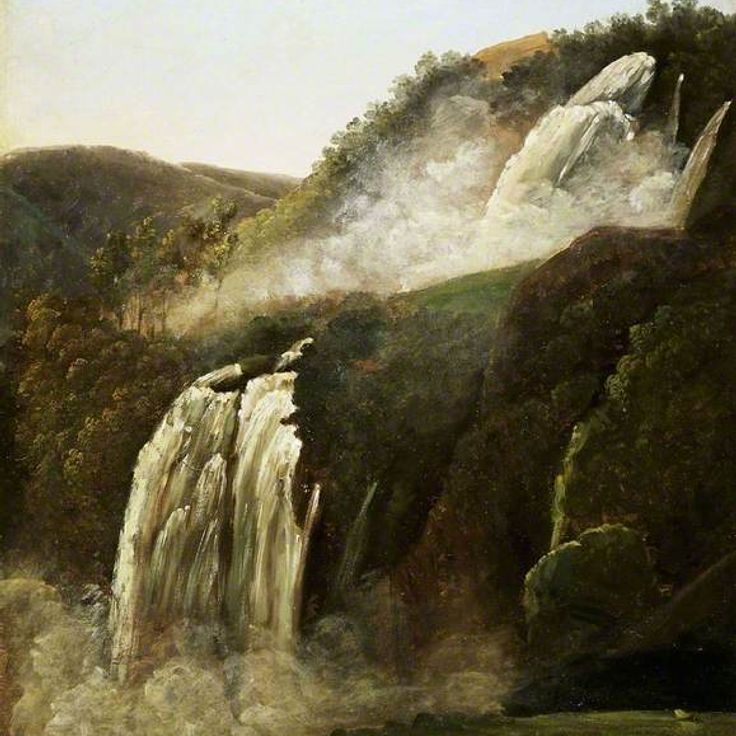
Terni, Italy
Cascata della MarmoreThis cascade was built during Roman times to regulate the waters of the Velino River and prevent flooding in the plain. The water is channeled over a drop of 541 feet (165 meters) to the Nera River. A hydroelectric plant uses the controlled flow to generate electricity, with water releases scheduled at specific times during the day. Visitors can observe the cascade from several viewpoints and trails located at different elevations.
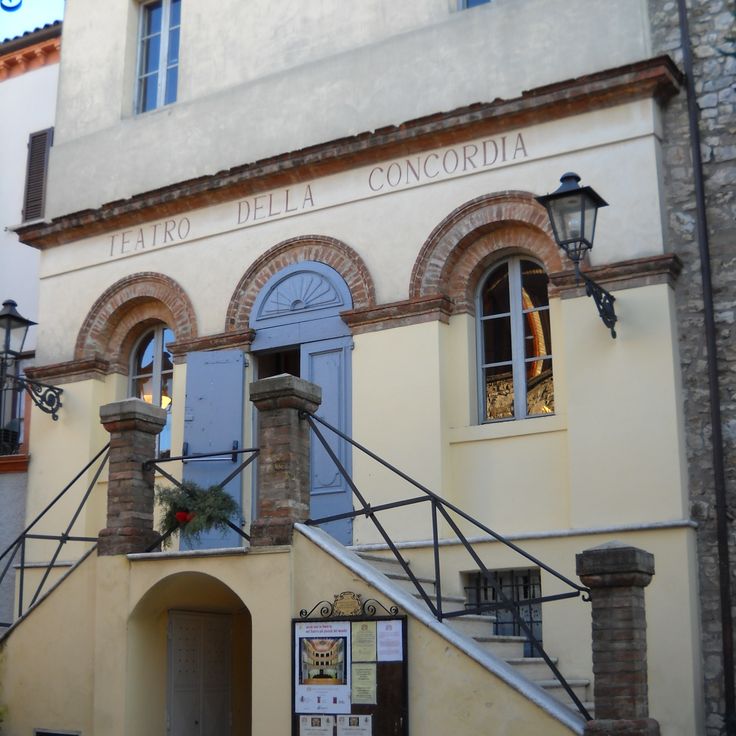
Monte Castello di Vibio, Italy
Teatro della ConcordiaTeatro della Concordia is a historic 99-seat theater built in 1808, documenting the cultural history of the Umbrian region. The interiors preserve hand-painted wall decorations and the original wooden structure, providing insight into early 19th-century theater architecture. This theater demonstrates the importance of performing arts in rural Umbrian communities during the Napoleonic period and illustrates the connection between local craftsmanship and European theatrical tradition.

Montegabbione, Italy
La ScarzuolaLa Scarzuola connects a 13th-century Franciscan monastery with a modern architectural ensemble created by Milanese architect Tomaso Buzzi between 1958 and 1978. The site comprises seven theatrical constructions in stone and concrete representing mythological and literary themes. The original monastery was reportedly founded by Saint Francis of Assisi. The complex features staircases, towers, and loggias that combine classical and contemporary architectural forms. Buzzi conceived La Scarzuola as an ideal city inspired by Renaissance models.
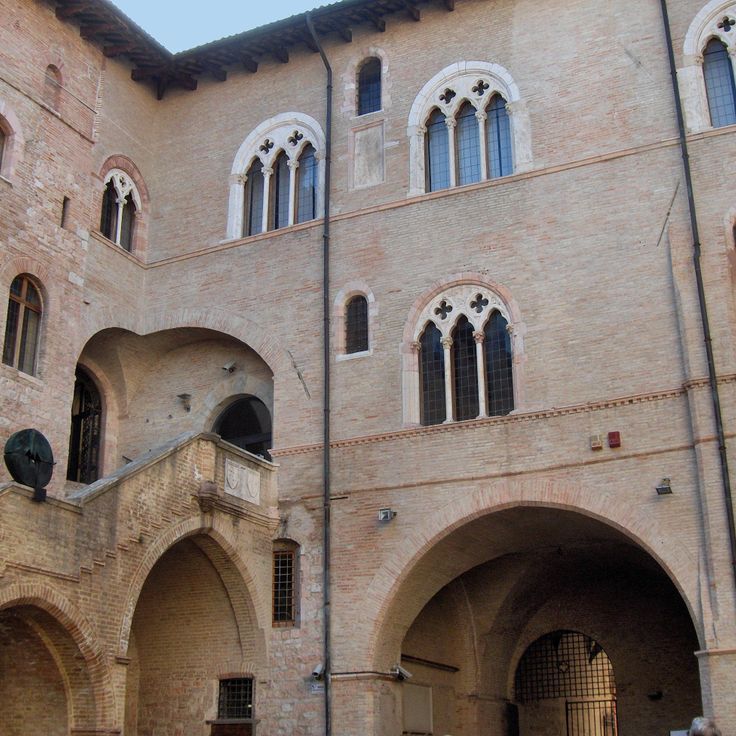
Foligno, Italy
Palazzo TrinciPalazzo Trinci preserves medieval frescoes depicting themes from mythology and literature. This civic palace of Foligno documents the region's history from the Etruscan period to the Renaissance. The frescoes show artistic production in Umbria during the Middle Ages. The building represents the city's development during the 14th and 15th centuries and presents representations of classical mythology and medieval literature in its halls.

Viepri, Italy
Pieve di Santa Maria in ViepriThe Pieve di Santa Maria in Viepri is a Romanesque parish church dating from 1200 with a stone facade. The exterior walls display geometric patterns following the Lombard architectural tradition. This church belongs to the religious monuments of the region that have documented Umbria's ecclesiastical architecture since the Middle Ages.
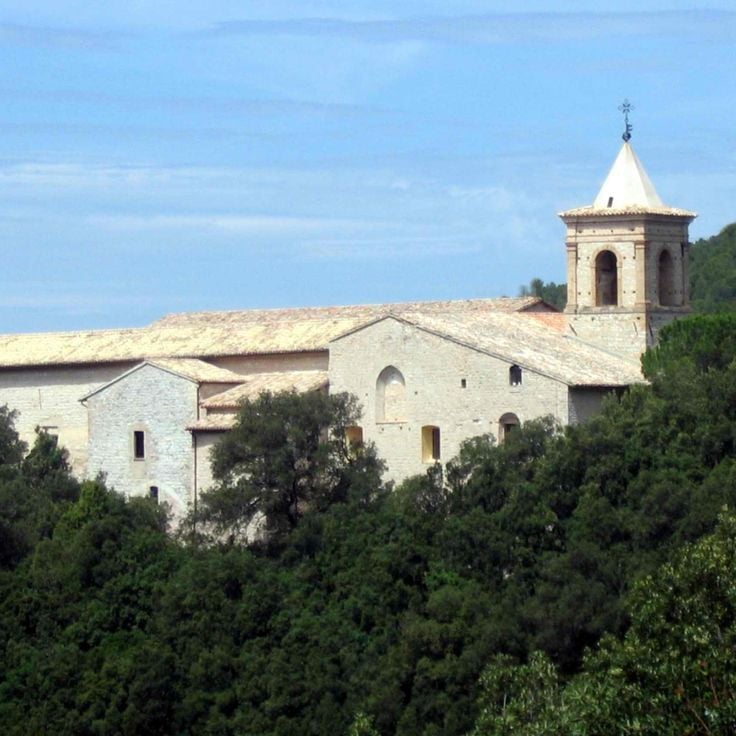
Foligno, Italy
Abbazia di SassovivoThe Abbazia di Sassovivo is an 11th-century Benedictine monastery located in the hills above Foligno, contributing to the historical record of the Umbria region. This monastery served as a religious and cultural center for centuries and preserves medieval frescoes and a Romanesque cloister with Byzantine influences. The cloister, built in the 13th century, displays carved columns that demonstrate the craftsmanship of that period. The complex sits within oak forests and combines architectural elements from different eras.
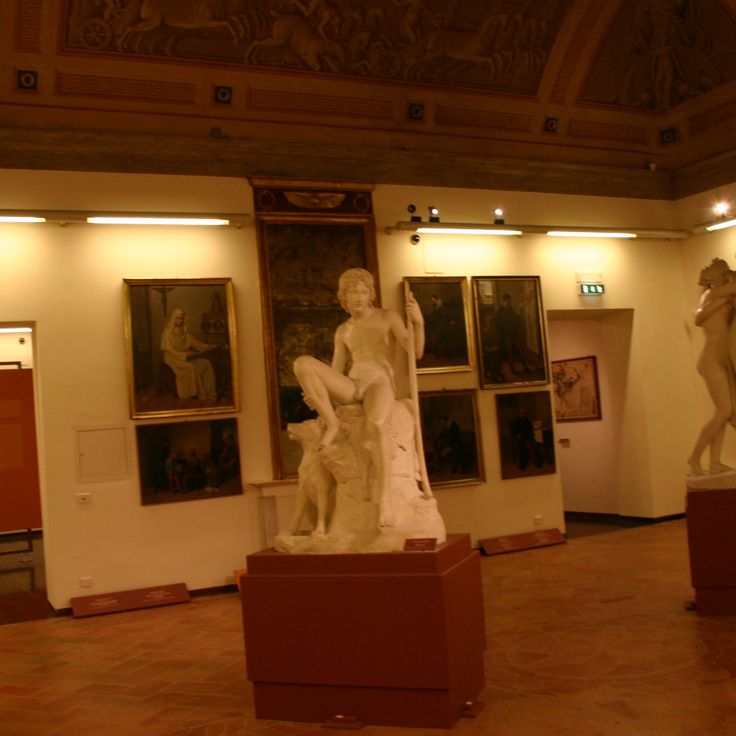
Perugia, Italy
Museo Civico di Palazzo della PennaThis Renaissance palace houses a collection ranging from Etruscan artifacts to 20th-century artworks, documenting the artistic development of Umbria. The museum displays archaeological finds, paintings, and sculptures from various periods of the region. The exhibition rooms present objects from ancient Etruscan times to the modern era. The building itself dates from the Renaissance period and complements the cultural and historical significance of the collections on display.
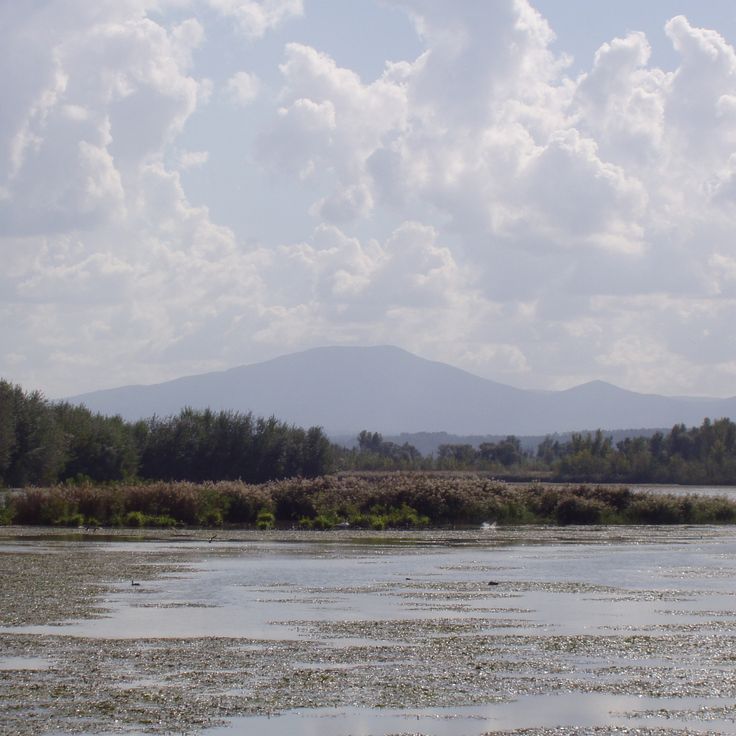
Alviano, Italy
Lago di AlvianoLago di Alviano is located within a 2,200 acre (900 hectare) nature reserve with observation stations for more than 100 bird species. The area provides habitat for migratory and resident birds in a landscape of reed beds and wetlands. The stations allow visitors to observe herons, cormorants, and waterfowl depending on the season. This lake was formed by a dam on the Tiber River and today constitutes an important ecological area in Umbria.

Orvieto, Italy
Museo Claudio Faina e CivicoThe Museo Claudio Faina e Civico preserves archaeological findings from the region and documents the development from Etruscan to Roman times. The collection includes Etruscan ceramics, bronze objects, Roman coins, as well as utilitarian items and metalwork from various periods. This museum is located in Palazzo Faina and complements the historical sites of Umbria through its documentation of local excavations and craftsmanship techniques.
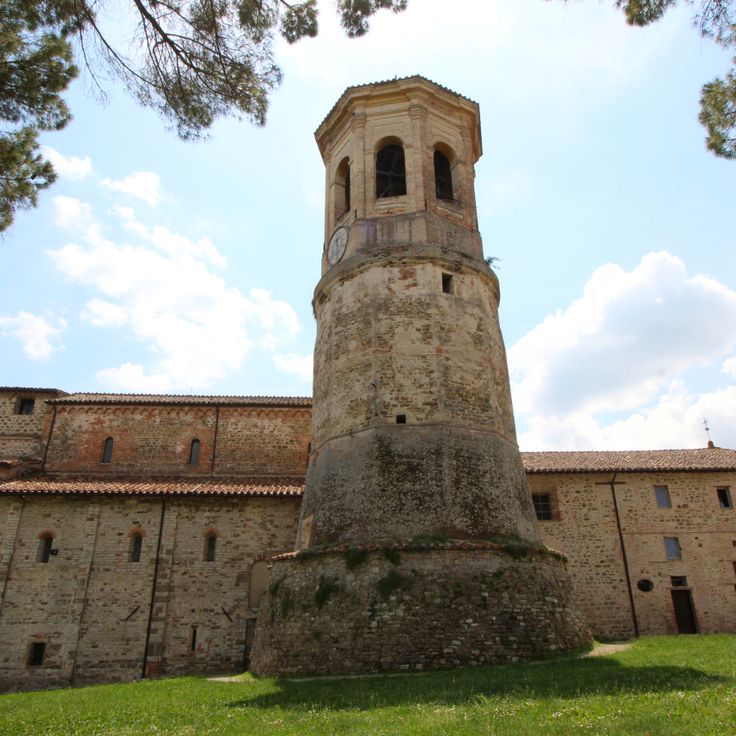
Umbertide, Italy
San Salvatore di MontecoronaThis Benedictine monastery from the 11th century stands in the Umbrian countryside and represents one of the sites documenting the medieval heritage of the region. The Romanesque crypt of San Salvatore di Montecorona displays architectural elements from the founding period of the monastery. The upper church contains frescoes that illustrate the artistic expression of religious communities between the medieval period and the Renaissance. The monastery documents monastic traditions that shaped the cultural heritage of Umbria. The complex combines sacred architecture with the natural environment and provides insight into religious and artistic development across several centuries.

Perugia, Italy
Museo Archeologico NazionaleThe Museo Archeologico Nazionale preserves Etruscan and Roman artifacts with emphasis on funerary objects and ritual bronzes. This museum documents the material culture of Etruscan civilization and the subsequent Roman occupation of Umbria through vases, weapons, jewelry, and votive offerings. The displayed objects come from regional necropolises and sanctuaries and illustrate the religious practices and craftsmanship of ancient inhabitants. The collection complements the understanding of the historical development of Umbria from the Etruscan period through the Roman era.